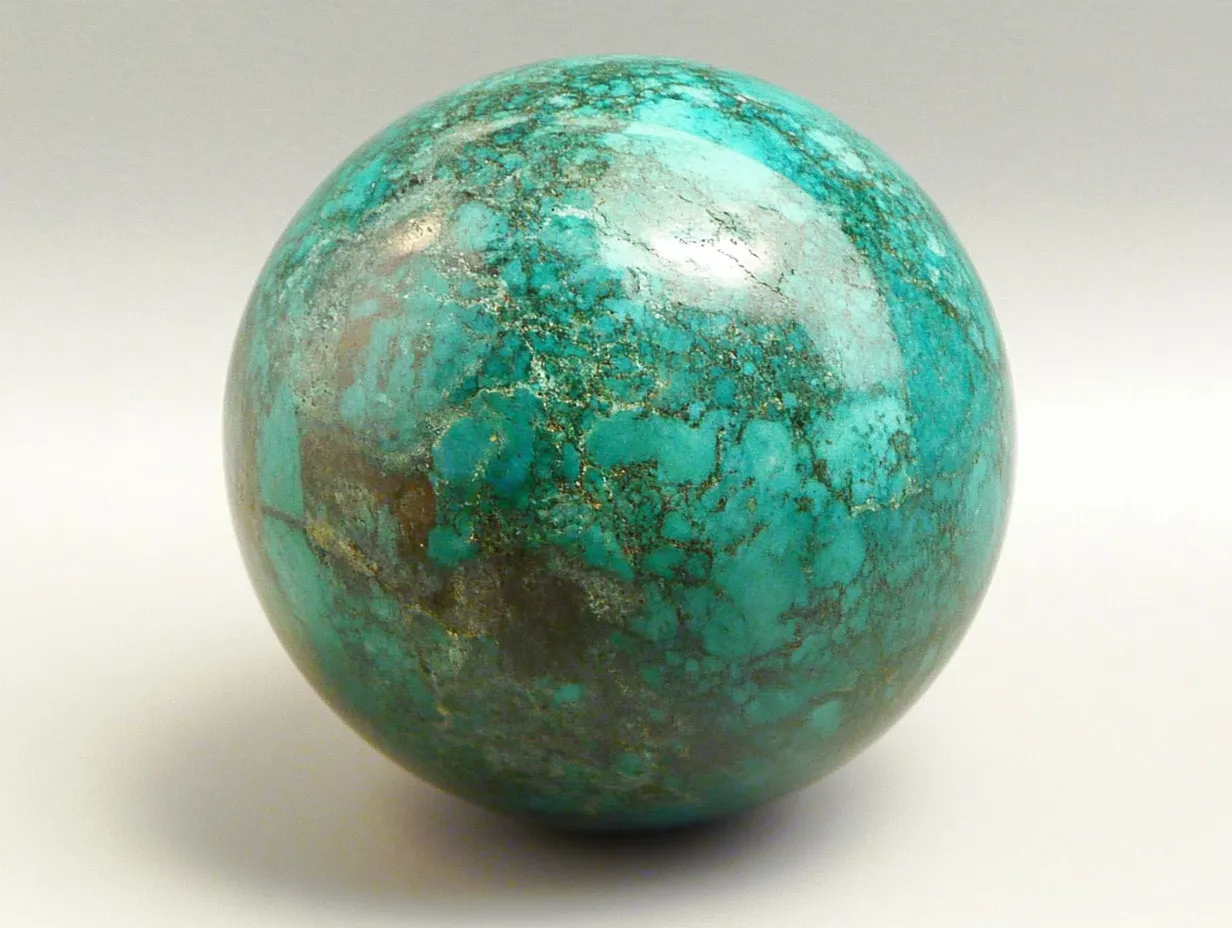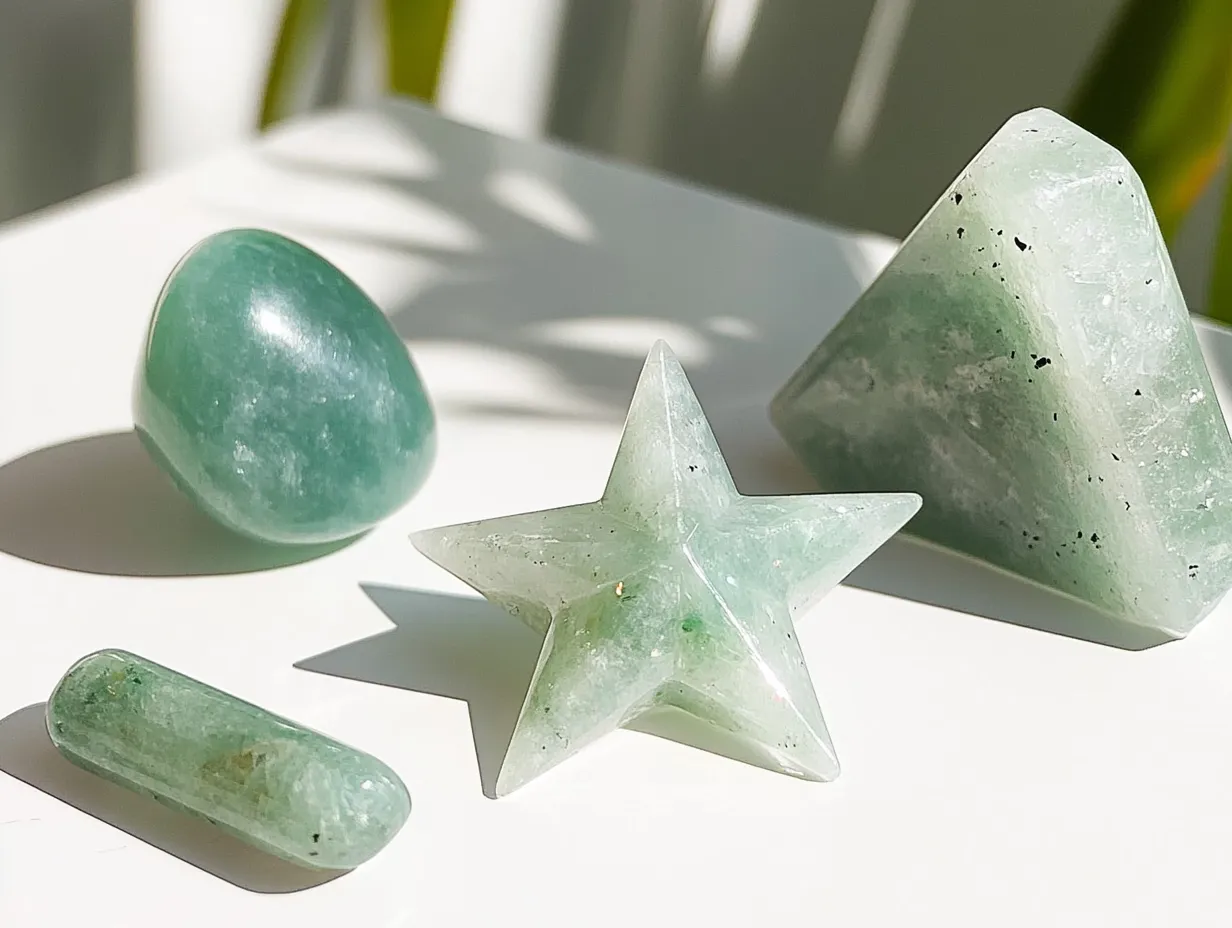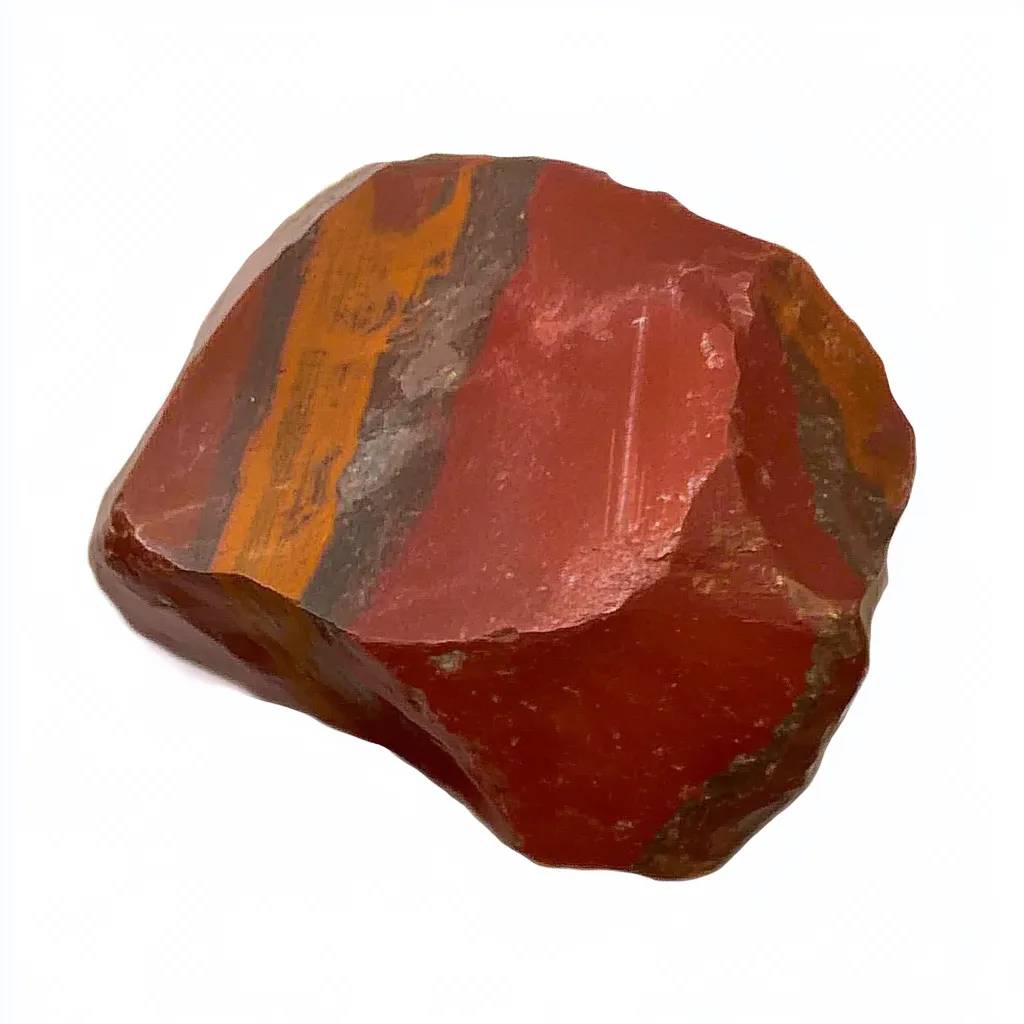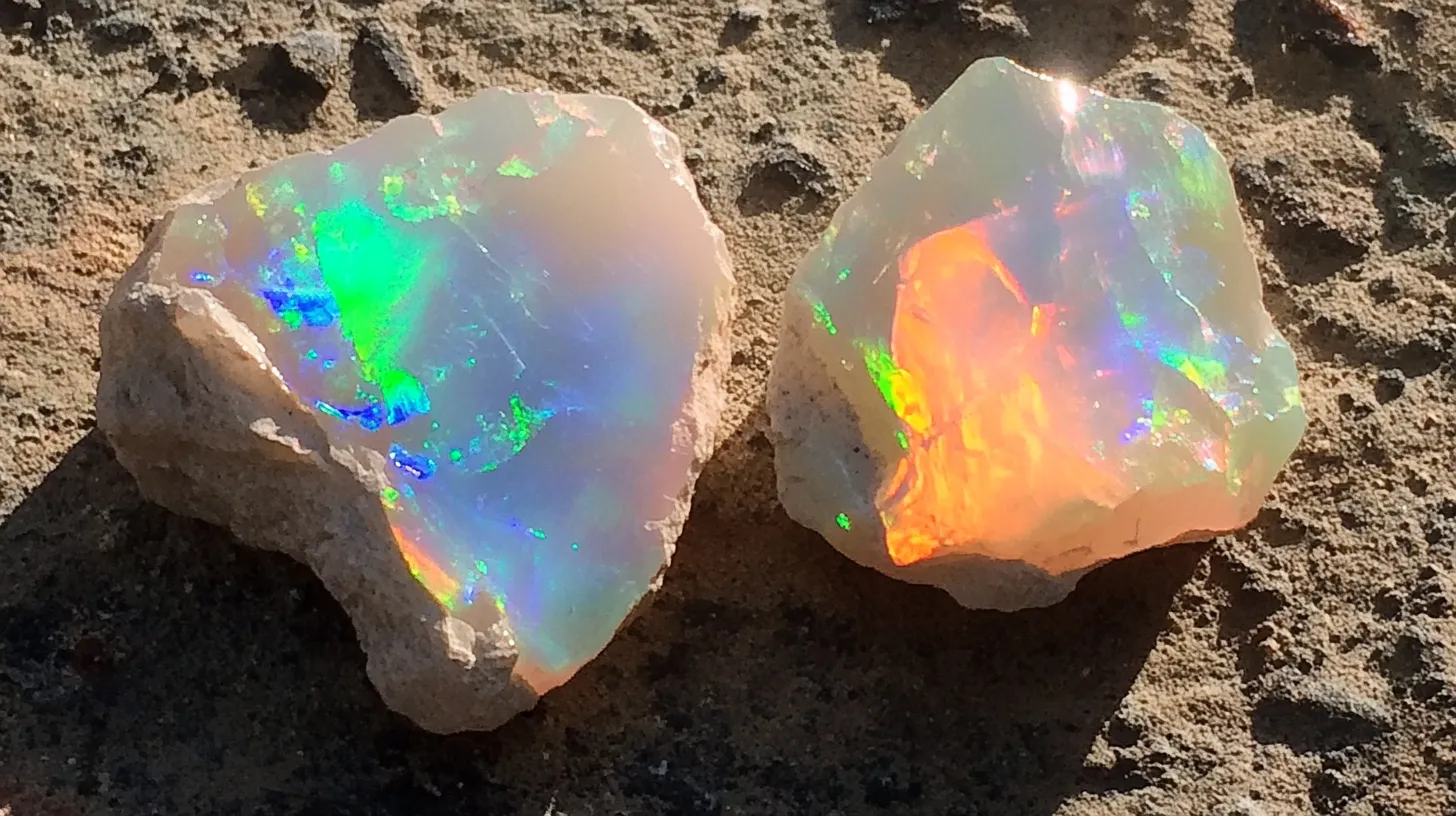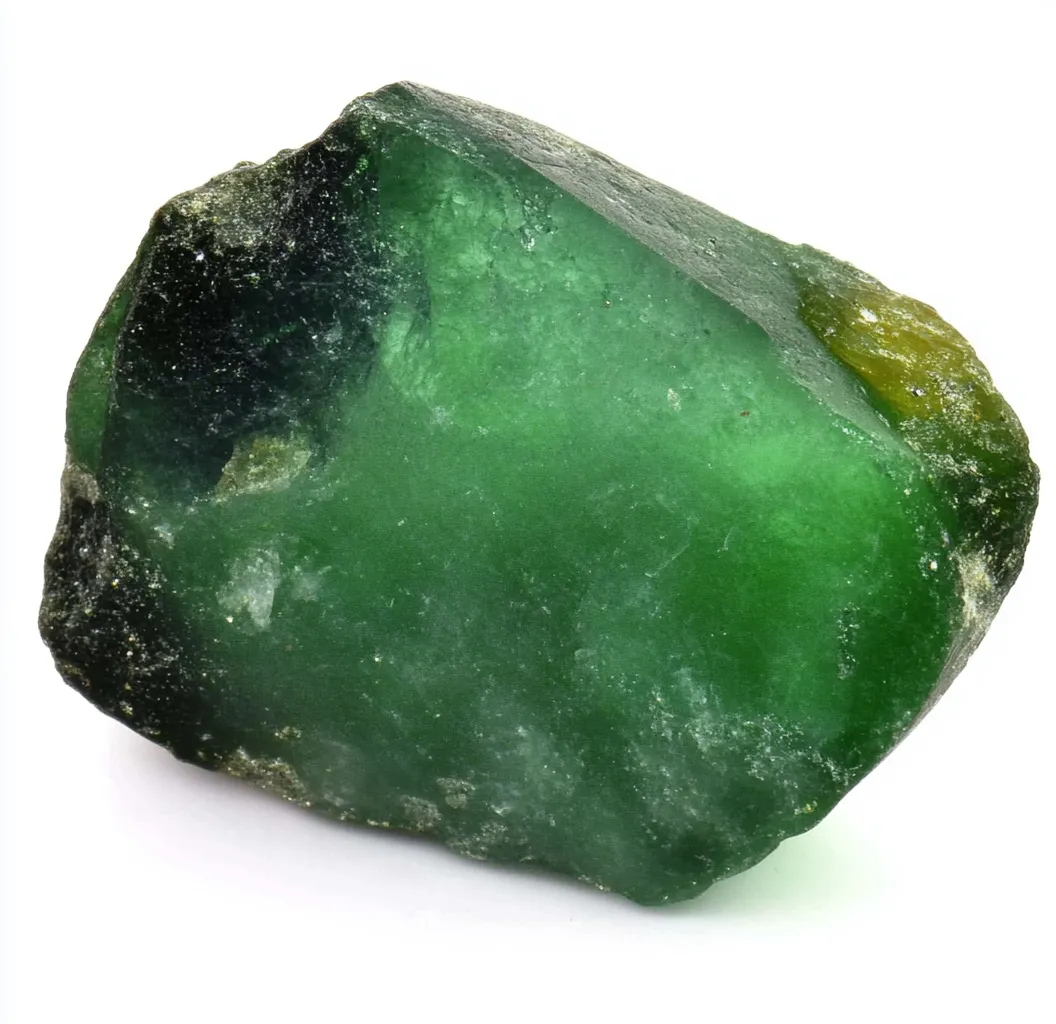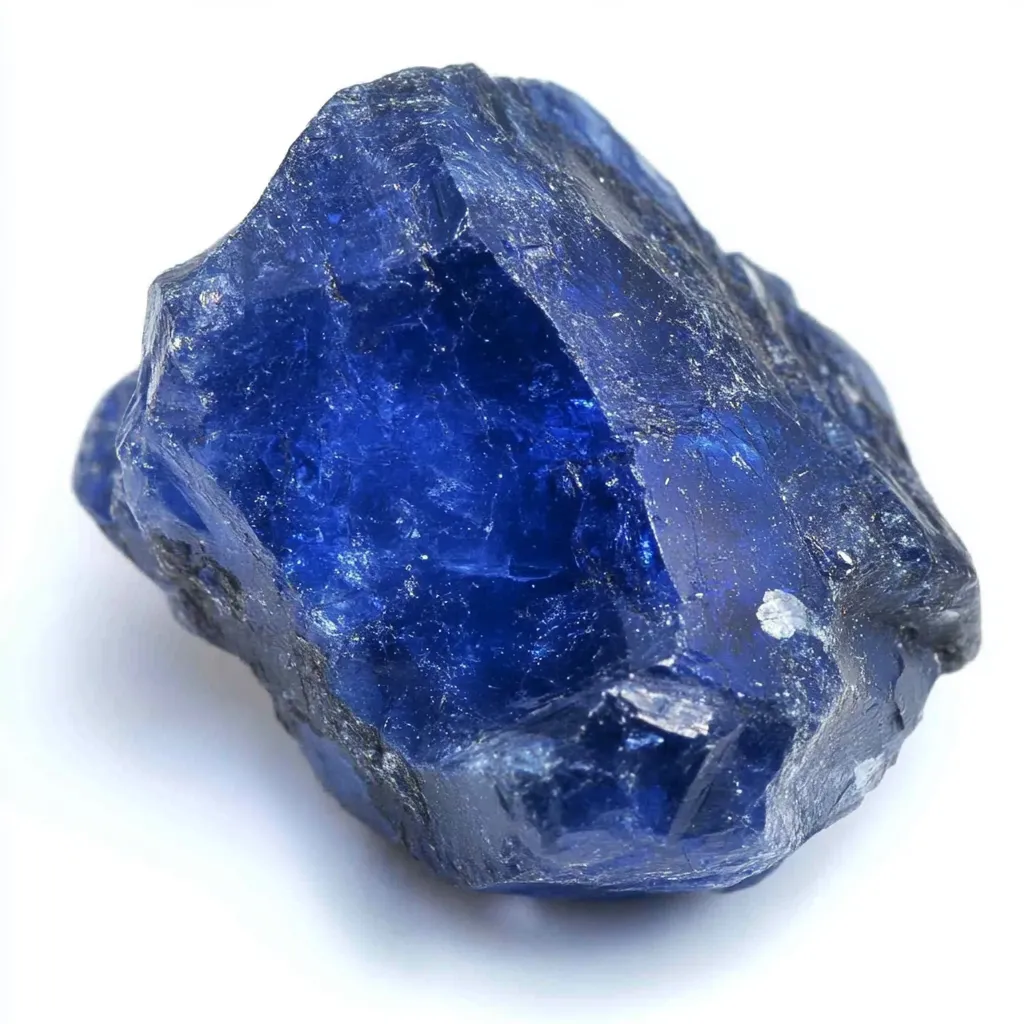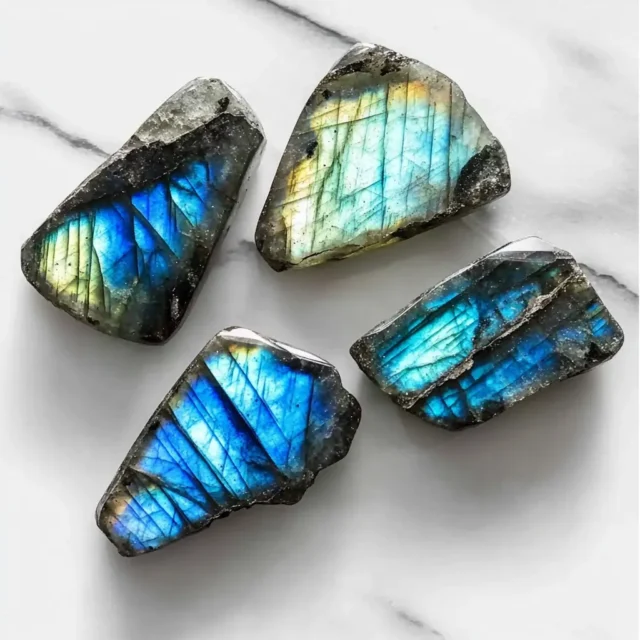

What Is Labradorite Stone?
Labradorite is a mesmerizing feldspar mineral (that is, a type of crystal) that is well known for its dazzling flashes of color, known as labradorescence. When light strikes the stone at just the right angle, it bursts into vibrant hues—electric blue, green, gold, and even fiery orange. This stunning visual effect makes labradorite a favorite among crystal collectors and jewelers. It is also popular with those who seek out stones for their metaphysical properties, as many people believe labradorite to be a powerful magical stone.
Labradorite is found predominantly in Canada, Finland, and Madagascar. It has a Mohs hardness of 6 to 6.5, which is relatively modest. This fact makes it suitable for items worn close to the body, like earrings and pendants, as well as for decorative pieces. It also makes it suitable for the use to which the photograph at the top of this page puts the stone, which is simply lying around in the world. Although labradorite doesn’t sparkle like a diamond, its otherworldly glow makes it have a unique and almost mystical allure.
The moment I first laid eyes on a polished piece of labradorite, I knew I was a goner. It looked like there was a storm trapped inside. That memory didn’t just turn me into a fan of this magical stone; it made me an aficionado.

Shapes & Forms of Labradorite Stone
Typically, Labradorite is available in the following forms:
- Tumbled stones
- Cabochons (which are flat-backed and often used in rings and pendants)
- Slabs
- Raw chunks
The tumbled form is great for placing under a pillow (or carrying in your pocket, as I suggest), while the cabochon form is perfect for using with rings and pendants. Jewelry designers love the color play that Labradorite has, and you’ll never find two totally identical pieces.
Natural, uncut labradorite is frequently selected by those who favor raw, unaltered stones for working with energy. Its rough and natural surface makes it a great choice for such purposes. On the other hand, pieces taken from polished slabs are fantastic display pieces and can be used in energy grids. They can especially light up when sunlight hits them, allowing their labradorescence to show.
Heart-shaped forms, palm stones, and worry stones are some of the new carved versions of crystals gaining popularity with contemporary crystal users. These aren’t your traditional crystal formations; they are made specifically to be more pleasing to the eye and hand.
Common Forms of Labradorite
| Form | Characteristics & Uses |
|---|---|
| Tumbled Stones | Small, smooth; carried in pocket or placed under pillow |
| Cabochons | Flat-backed; ideal for rings and pendants |
| Slabs | Polished; used for display or energy grids |
| Raw Chunks | Natural surface; used in energy work and spiritual use |
| Carved Shapes | Heart, palm, worry stones; ergonomic and decorative |
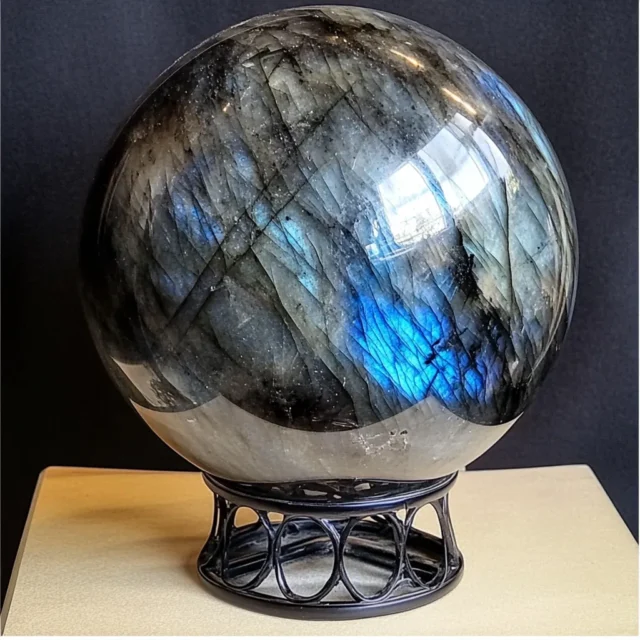
Labradorite Stone Metaphysical Properties and Benefits
Labradorite is often referred to as the “Stone of Transformation,” and for good reason. Its beauty may defy description (see below, “Appearance”), but one thing is for sure: the pull of its mineral composition—rich in various metals such as sodium, calcium, iron, aluminum, and silica—creates a stunning visual experience that has been known to stir the energies of the inner eye. Consequently, a stone that has been said to do this for millennia is regarded as having potent enhancement of intuition added to its already dramatic repertoire—enough, of course, to consider it magical. And, if magic isn’t your scene, then what about solid protection of one’s aura? Isn’t that a good enough argument to consider it a versatile and psychically serviceable ally? Of course, it is.
Labradorite is said to help calm an overactive mind, boost creativity, and protect against negative energies, say practitioners. If you are going through a life shift—such as a new job or relationship—labradorite is said to help you navigate that uncertainty with grace and strength.
Some energy workers recommend labradorite for those who feel worn down emotionally or who are too empathic. It is, in their estimation, a beneficial crystal for providing a buffer and allowing one’s energy to stay strong and stable while still being open to whatever kind of inspiration one is.
But keep in mind: although many people who use labradorite really love it and sing its praises, the benefits they claim are not scientifically proven. Certainly, consider Labradorite helpful if you do. But it is not a substitute for medical treatment.
Purported Metaphysical Benefits of Labradorite
| Benefit | Description |
|---|---|
| Enhances Intuition | Supports spiritual insight and inner vision |
| Provides Aura Protection | Shields against negative energies and psychic disturbances |
| Aids Transformation | Helps during major life changes |
| Calms the Mind | Soothes mental restlessness and emotional overwhelm |
| Stimulates Creativity | Encourages imaginative thinking and problem-solving |

Labradorite Stone Meanings in Ancient Lore and History
As per Inuit folklore, labradorite originated from the frozen embers of the Aurora Borealis, making it a stone with heavenly origins. This tale, handed down through the ages, highlights both the stone’s alluring beauty and the enigmatic energies it is thought to possess. Even in modern times, labradorite remains closely associated with the northern lights because of both its otherworldly origins and its shimmering, almost supernatural appearance.
Missionaries first discovered it in Labrador, Canada, giving it its current name. Indigenous communities considered it to be a potent spiritual stone, used in rituals to bolster bonds with the higher realms. All things considered, it has a long and lore-filled history.
In folklore, varieties of Labradorite like Spectrolite were believed to offer protection in battle and during shamanic journeys. Ancient shamans regarded it as a bridge from Earth to the spirit worlds—a stone that reveals hidden truths.
The deep history and everlasting allure of labradorite attract those who desire not only lovely stones but also ones with significance.
Labradorite Stone and Birthstone
Even though it has not been given formal recognition as a traditional birthstone, labradorite has certainly won a cherished space in the hearts of individuals born under the dark skies and stormy moons of late fall and winter. Despite its association with the birth month, people often associate labradorite with its capacity to bring about transformation and foster spiritual enlightenment. And, emotionally charged, this gorgeous gem is the perfect companion for anyone seeking to untangle an impediment in their path towards getting a wiggle of clarity and gaining some Nguni strength.
Some gem lovers connect labradorite to people born in February or March, relating it to the intuitive energy of Pisces. Its magical flash, known as labradorescence, Ilona says, feels almost otherworldly—perfect for dreamers, artists, and anyone navigating significant life transitions. It’s more than a stone; it’s a way to reflect one’s true self.

Guide to Cleanse Labradorite Stone
Labradorite is a crystal with a high vibration, but like all stones, it collects energy over time. Maintaining its cleanliness keeps its metaphysical properties acute. How can we easily maintain its cleanliness? Let water run over it—ideally, in a natural setting like a stream or waterfall. If you can’t find a natural setting, allow your sink to perform its magic under cool water for a few seconds. Remember to wipe down the crystal after using it.
Methods to Cleanse Labradorite
| Cleansing Method | Description |
|---|---|
| Running Water | Rinse under stream or sink; then pat dry |
| Smudging | Use sage, palo santo, or incense smoke to reset energy |
| Selenite Slab Placement | Leave on a selenite slab overnight to cleanse passively |
Another subtle technique is smudging. Pass your labradorite through sage, palo santo, or incense smoke. The process does not just reset the stone; it also establishes a calming ritual for you. Want another low-to-no-effort option? Place the labradorite on a selenite slab overnight. Selenite will cleanse your labradorite and look gorgeous while doing it.
Guide to Charge Labradorite Stone
Consider charging to be like tuning your stone’s energy to your frequency. Labradorite loves the moon, particularly during a new or full moon. Place it on a windowsill overnight and allow the moon to enchant it.
Some people also charge Labradorite with intention. They hold it in their hands, close their eyes, and speak their goals or thoughts aloud. Because this gem is deeply intuitive, it responds well to personal rituals. Just remember: labradorite doesn’t need frequent charging—once a month is often enough unless you use it daily.

The significance of the Labradorite Stone in Tarot
Tarot readings benefit from the presence of labradorite, which helps the reader access the type of inner wisdom for which the stone is a well-known guide. When strongly resonating with cards like The High Priestess and The Moon—both of which have a lot to do with intuition, hidden knowledge, and the subconscious—labradorite can take a reading deeper and help the reader see more clearly into the now and into possible outcomes. It can also help keep the reader focused and a little more perceptive while untangling the knots that can sometimes appear in a reading.
There was a time when I observed a tarot card reader lay a labradorite on a person’s third eye.
“It opens the veil,” the reader stated, and you could sense a palpable change in the atmosphere.
Be it psychological or for real, the labradorite supposedly creates an opening for the reader. You could argue, and with some merit, that a powerful stone, beautifully cut and polished as it may be, doesn’t actually perform this feat. You could also say that the feat doesn’t need to happen for the reader to read. And what’s so special about reading, anyway?
Labradorite Stone and Zodiac
Labradorite shares astrological ties with many zodiac signs, but it’s most closely linked with Scorpio, Leo, and Sagittarius. For Scorpios, the stone dulls emotional spikes and mellows the expedited art of one’s not-so-secret, intense, passionate nature. For Leos, it steadies their big, brave moves, making them pause and reflect on the needs of others before careening forward and up into the next big thing. For Sagittarians, who always chase higher meaning, this stone is an earthy force that stabilizes their mental travels, offers a slow, smooth slide down into thoughtful, wise intuitions, and keeps them from launching prematurely into the next wild idea.
Zodiac Sign and Labradorite Benefits
| Zodiac Sign | Effect of Labradorite |
|---|---|
| Scorpio | Balances emotions, tempers passion |
| Leo | Encourages reflection and thoughtful decision-making |
| Sagittarius | Grounds spiritual seeking and helps avoid impulsive actions |
Even if labradorite isn’t the best fit for your sun sign, it might connect with your moon or rising signs. After all, astrology is a layered map—and labradorite helps you read it. Its shimmering surface is like the zodiac itself: full of hidden colors, stories, and truths just waiting to be uncovered.

Questions and Answers
Extra Insights on Labradorite
Purple Labradorite
Purple labradorite is a rare and captivating form of the feldspar gemstone, known for its mesmerizing lavender-to-violet colors. Compared to the blue and green varieties of labradorite, collectors prize this color for its unusualness. I remember the very first time I beheld a purple labradorite crystal—it felt as if I were gazing into a lavender-to-violet twilight sky.
In the world of crystal healing, many practitioners believe that purple labradorite strengthens the effects of their work. It’s a captivating addition to any collection, even if you’re only drawn in by its timeless beauty.
Raw Labradorite
Unrefined labradorite holds the rugged, primal essence of Earth. Its not-polished-here surface often and for good reason makes your average Earthling glimmer with delight—the magical way this stone can display an oh-so-cherished color play. Lab work done with lapidary tools can leave you feeling a little shady too long—as if you might be stuck inside the labradorite—and a direct connection to the stone’s unaltered essence is bound to enhance your vibes, whether you’re doing odd jobs for the Earth or just keeping it on a shelf. Each piece is unique, so they’re the perfect icebreakers for any yellow-labradorite, room-temperature conversation.
Comparison of Raw vs Polished Labradorite
| Type of Labradorite | Surface Appearance | Energy Perception | Common Use |
|---|---|---|---|
| Raw | Rough, natural texture | Earthy, unfiltered essence | Meditation, collecting |
| Polished | Smooth, glossy finish | Focused, refined energy | Jewelry, decorative pieces |
Gray Labradorite
At first glance, gray labradorite may not appear very stunning. But when you tilt it under the light, it reveals its hidden fire. Its smoky base color makes the iridescent blues, golds, and purples show up even more dramatically. This version of labradorite is increasingly used in minimalist jewelry and home decor due to its blending of subtlety with surprise. Also, the gray tones are thought to help calm the mind and foster clarity during meditation. It’s a quiet powerhouse—don’t underestimate its glow.
Labradorite Cabochon
Polished and rounded, labradorite cabochons are stones that absolutely pop with the gem’s internal colors. Their smoothness allows for the ideal use in rings, pendants, and healing grids. You could say I’m a bit obsessed with cabochons since they work so closely with the realms of jewelry design that I inhabit. My obsession takes the familiar forms of admiration and appreciation, but what is it about cabochons that makes them feel so special? I would say it’s mostly about the very unique forms they take. They evoke the sensation of tiny universes encased in stone.
Labradorite Hardness Scale
Labradorite is a moderately-to-good durable stone. On the Mohs hardness scale, it ranks around 6 to 6.5. German mineralogist Friedrich Mohs developed the Mohs scale in 1812, and it remains in use today. It rates a material’s hardness based on which minerals can scratch it. Soft minerals like talc (which is a 1 on the scale) can be scratched by any mineral that’s harder, and tough minerals like corundum (which is a 9) can’t be scratched by very many things. Quartz (which is a 7) can scratch most of the minerals it can also form crystals with.
Mohs Hardness Scale Comparison
| Mineral | Mohs Hardness | Scratch Resistance |
|---|---|---|
| Talc | 1 | Very soft |
| Labradorite | 6 – 6.5 | Moderately durable |
| Quartz | 7 | Scratches labradorite |
| Corundum | 9 | Scratches most minerals |
Rainbow Labradorite
Perhaps the most breathtaking form, rainbow labradorite displays iridescent fantasies of multiple colors—blue, green, gold, pink, and even orange. It feels like holding a shard of the aurora borealis in your palm. These multicolored fantasies are not only visually spellbinding but are also associated with full-spectrum energy balancing. Some believe rainbow labradorite aligns all chakras and promotes a most potent trifecta of metaphysical favors: intuition, creativity, and protection. Whether for devotion or demographic intrigue, this magic stone is a serious showstopper.

